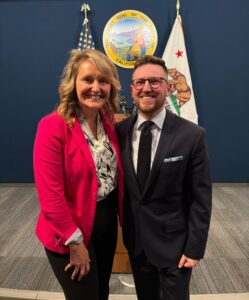If you live in California and have been following the news recently, there’s a four-letter acronym that you haven’t been able to escape seeing or hearing: CEQA.
On June 30th, Governor Gavin Newsom signed into law a pair of major reforms to the California Environmental Quality Act, known as CEQA, that will significantly reshape how and where the law applies.
In the immediate aftermath, the only clear winner was hyperbole. Media coverage ran the gamut from exuberant to cataclysmic, with pundits and opinion writers predicting either a historic end to California’s housing woes or the destruction of our premier environmental law as we know it. Within hours of the changes, pieces began popping up with titles such as “How The Enviros Lost CEQA” (Politico) and “California Rolls Back Its Landmark Environmental Law” (New York Times). Housing advocates heralded the changes as monumental steps for new homebuilding, with Calmatters writing that “One Of The Biggest Obstacles to Building New CA Housing Has Now Vanished.” At the same time, many environmental organizations excoriated the governor for what they have referred to as “the worst anti-environment bill in recent memory” and “an unprecedented rollback to California’s fundamental environmental and community protections.”
Much of what has been written on these changes in traditional media has provided a range of opinions, but little in the way of substance. Amidst all the fervor and fury, and with the dust now beginning to settle, many are left wondering how this all unfolded and what the new laws do. We unpack what happened and what we expect next below:
The Backstory
To understand the events of late June, we have to begin at the start of the legislative session in January. At the time, two new CEQA reform measures were introduced: AB 609, by Assemblymember Buffy Wicks, and SB 607, by Senator Scott Wiener.
AB 609 created an exemption from CEQA as a statute for projects that are deemed “environmentally friendly” housing. The bill was limited to housing in incorporated areas and census-designated places (infill), included a minimum density requirement, would not apply on sites larger than 20 acres, and established a list of criteria to ensure developers could not use the law to build on environmentally sensitive areas, such as wetlands, critical species habitat, or contaminated areas. Crucially, usage of AB 609 was restricted to parcels that had either been developed before or were 75% surrounded by urban uses, preventing it from being used to build sprawling greenfield developments.
Greenbelt Alliance proudly supported AB 609, as we believed it to be a straightforward solution to a vexing problem: the misuse of CEQA to stall badly needed infill housing projects. Read our take on AB 609 here.
SB 607, in contrast, was broader in scope, more complex, and immediately controversial. The bill exempted a swath of different types of projects (not just infill housing) from environmental review and proposed to fundamentally alter CEQA in several critical ways.
First, the bill introduced what has become known as the “near miss” concept, allowing projects of all types that narrowly failed to qualify for full exemptions to still benefit from streamlined review under certain conditions.
Next, it placed new limitations on the scope of the administrative record (restricting what materials courts could consider during CEQA litigation), required the mapping of all infill areas statewide by the Governor’s Office of Land Use and Climate Innovation, and exempted housing element rezonings from CEQA, provided they met specific statutory criteria.
Finally, and most importantly, SB607 proposed redefining CEQA’s evidentiary standard, raising the threshold for challengers to demonstrate that a project would result in significant environmental impacts. This change would have marked a fundamental shift in how the law functions and prompted the most controversy and outcry.
To The Budget We Go
Both AB 609 and SB 607 were proceeding apace in the legislative session, making their way through various committee hearings as the authors engaged with stakeholders, committee staff, and other legislators. However, business as usual was upended by an announcement from Governor Gavin Newsom in mid-May: as part of the budget revision process that would occur over the next month, the Governor wanted language from both CEQA reform bills to be folded into budget trailer bills, legislation which implements the budget itself, declaring that California needed to “remove endless regulatory delays that have held us back for decades.”
After the May 15th announcement, legislative leadership (Senate Pro Tempore McGuire and Assembly Speaker Rivas), the Governor’s Office, and the authors of the bills came together to work out an agreement on what language would make it into the final bill. This caused considerable consternation amongst critics of the legislation: the process was opaque, and many advocates were unable to lobby the legislature in the way they were accustomed to. But despite pressure from advocates, the Governor made his position very clear: there would be no budget deal without significant reforms to CEQA, and leadership would have to come to the table and negotiate to get it done.
The Saga Concludes

Everything came to a head during the last week of June, when the budget trailer bills themselves were released. AB 609 remained functionally intact and became AB/SB 130. After contentious last-minute negotiations over labor language, a deal was eventually struck: projects under 85ft, or 8 stories, would not be automatically required to use union labor. Projects above 85ft, however, would. Though some opposition and concern remained, the bill passed through both committee and floor votes without much fanfare.
The provisions of SB 607, now in print as AB/SB131, were modified significantly: the “near miss” provision was scaled back and now only applied to housing projects; the limitations on what documents can be included in the administrative record were pared back; and, critically, the major modifications to and weakening of CEQA’s evidentiary standard – that previously had many environmentalists apoplectic – was struck. A more comprehensive analysis of all provisions can be found at the resource at the end of the blog.
Despite those significant wins by advocates initially opposed to the bill, including labor unions and environmental organizations, the 11th-hour addition of a broad exemption for advanced manufacturing facilities and concerns that provisions to protect sensitive habitat and species were not comprehensive enough roused environmentalists to mount a final push to stop the bill that was ultimately unsuccessful. After hours of testimony, a litany of questions from other senators, and acknowledgment of the desire to address potential unintended consequences of the bill via subsequent clean-up legislation, it passed out of both the Senate Budget Committee and the floor of the legislature.
Hours later, Governor Newsom signed both AB/SB 130 and AB/SB 131 into law. They became effective immediately, ushering in a new era of CEQA.
Where Do We Go From Here?
Despite the rhetoric surrounding the CEQA reform package, there is cause for both optimism and concern, as well as a clear need for continued action in the near term.
Many of these reforms are truly monumental and will help make California a more sustainable and equitable place. Building more homes in already developed areas, known as infill, is essential to meeting our climate goals and preserving natural and working lands. Ensuring that CEQA can no longer be misused to block environmentally beneficial infill housing is a long-overdue achievement and one worthy of celebration.
At the same time, however, serious issues remain. As UC Berkeley environmental law professor Eric Biber points out, the bill’s list of protected lands and natural areas is woefully inadequate, leaving species and habitat far too vulnerable to potential harm. Additionally, the broad nature of the advanced manufacturing provisions is cause for considerable concern–groups like California Forever, for example, are already clamoring at the prospect of utilizing those parts of the law to develop industrial megaprojects in greenfield areas. As environmental advocates, we will need to remain vigilant and push for stronger safeguards, including during the legislative cleanup process that will unfold in the near future.
Ultimately, our work, as always, is far from over. Greenbelt Alliance remains committed to advancing policies that deliver the housing Californians need while safeguarding the environment we love, cherish, and depend on.
Additional information can be found on a new CEQA exemption briefing for economic development released by the California Association for Local Economic Development (CALED).




